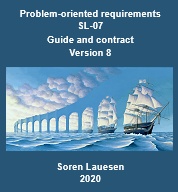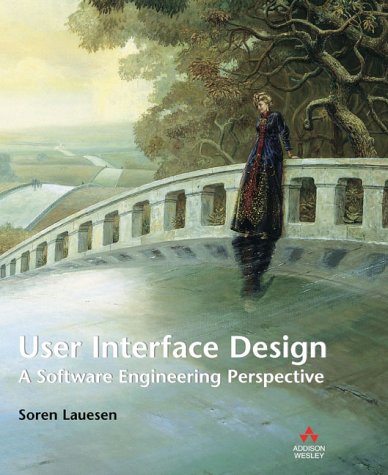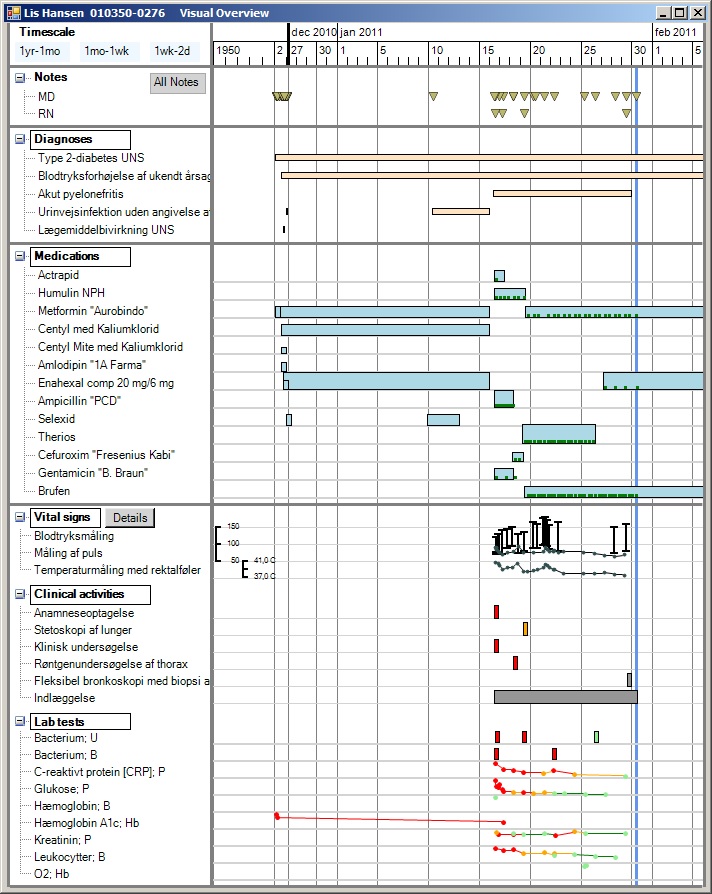About Soren
Project CV (pdf)
CV and interests
Publication list
My journey in the IT world (in Danish)
Project failures and cures
Large IT projects may be damaged in many ways, for instance large cost or schedule overruns,
unsatisfied users, or disappointing business results. Sometimes the damages are so severe that the project is closed (complete failure). I have investigated several large projects
and identified 37 damage causes and 22 cures. See more. . .
Problem-oriented requirements - SL-07
Traditional requirements describe what the system shall do. Problem-oriented requirements describe what the system is to be used for. They cover all kinds of requirememts, are five times shorter, five times faster to write, and five times faster to reply to. Disadvantage: It takes five days to learn the method. See more . . . Og på dansk . . .
So IT-people use SL-07? No, most developers use "user stories" because they are sold by the expensive consultants. We tested how well user stories covered the needs and found they covered around 30% of the issues the custtomer expected to be covered. See more . . .
IT Contracts for IT people (in Danish)
Requirements are often appendices to long contracts. IT-people don't read the contract and lawyers don't read the requirements. It need not be so. SL-07 requirements have an 8 page contract with 4 appendices. Together they cover what traditional 50 page contracts with 16 appendices do. See more . . .
User Interface Design
There is a big gap between UX specialists and software developers. UX specialists are good at identifying user needs and testing whether usability of the user interface is adequate. However, they are rarely able to design intuitive and efficient user interfaces. Nor are programmers. There are broad guidelines such as "error messages must be friendly", but no systematic design methods. Around 2005, Lauesen invented a design method (Virtual Windows) that gives a minimum of user screens, good data overview, efficiency for professional users, and fast development. See more . . . Og på dansk . . .
The health record screen at the right was designed with this method. On a time scale, it shows all data for one patient: Doctor's notes, diagnoses, medications, lab-results and other treatments. See more . . .
If you are interested in creating a system with a real user interface, you can download my free MS-Access Tutorial. It shows how to create a system for hotel receptionists:
See more . . .
Data visualization, End-user development and EHR
Professionals need overview of complex data, so good data visualization is crucial for them. However, different professionals, e.g. different specialties at a hospital, may want to see data differently. Preferably, they should be able to develop the necessary screens themselves. My team at the IT-University invented the Uvis tool for this purpose. The health record screen at the right was made by a heart surgeon, using this tool. See more . . .
EHR - Electronic health records
Lauesen has been involved in many aspects of EHR: National planning of EHR, inventing and developing the Uvis tool, assessment of the EHR system deployed for roughly half of Denmark (EPIC).
See more . . . -
Og på dansk . . .
Soren's journey in the IT-world
Lauesen has worked in software engineering since 1962. He wrote his first tutorial in 1969, developed several IT-educations, studied why SW research wasn't used in industry, how perfectionism killed usefulness, and fought hype about OO, SOA and IT-architecture. He invented ways to write useful requirements and develop intuitive user interfaces. And he worked with the national auditors to find the causes of project failures.
Min rejse i IT-verdenen (in Danish)
|
Problem-oriented Requirements SL-07

User interface design

Uvis health record

|



